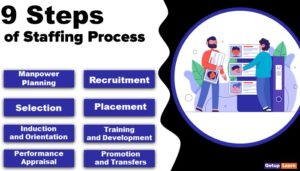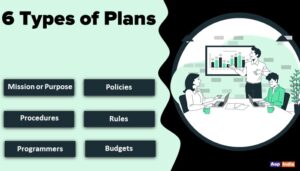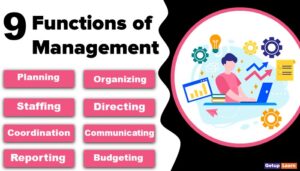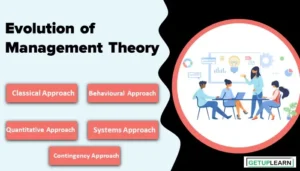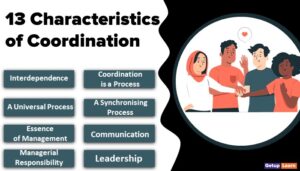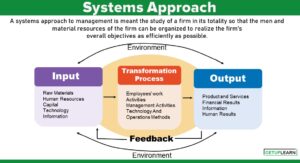Table of Contents
What is a Product?
A product may be defined as a bundle of utilities consisting of various product features and accompanying services. The bundle of utilities or the physical and psychological satisfactions that the buyer receives is provided by the seller when he sells a particular product.
A product is anything that can be offered to a market to satisfy a want or need. This is a narrow definition of a product and focuses on the physical or functional characteristics of a good or service. A broad view of a product extends beyond physical or functional attributes.
This broad product concept includes package design and labeling, symbols such as trademarks and brand names, and customer–service activities that add value for the customer.
A product is nothing but a bundle of physical, service, and symbolic attributes designed to enhance buyers’ want satisfaction. Product is anything that is potentially valued by a target market for the benefits or satisfactions it provides, including objects, services, organizations, places, people, and ideas.
Definition of Product
A product is anything that can be offered to a market for attention, acquisition, use or consumption that might satisfy a want or a need.
Philip Kotler
Thus, anything, virtually anything can be covered within the ambit of attention (service or idea), acquisition (physical goods or tangible part of product), use (tangible or intangible part such as leased car when leasing is a service and car is physical goods), or consumption (consumables such as food).
In fact, the definition of a product conveys more than just natural meaning. It conveys the company’s business and therefore the related competitors.
Basic Concept of Product
Products can be differentiated on various bases.;:
Form
Many products can be differentiated on the basis of size, shape, or physical structure. Sizes especially matter in products like television, computers, automobiles, etc.
Features
Most products are offered with varying features that supplement their basic function. Companies must identify and add new features and improve the old ones to be one up in the competition.
Quality
Products may be differentiated on the basis of quality like low, moderate, high, superior, etc. Both performance and conformance quality is important. Performance quality is the level at which the product’s primary characteristics operate. Conformance quality is the degree to which all the product units are identical and meet the promised specifications.
Durability
It is a measure of a product’s expected operating life under natural conditions of use. Buyers generally prefer products that last long.
Reliability
It is a measure of the probability that a product will not malfunction or fail within a specified time period. Buyers normally prefer reliable products.
Reparability
It is a measure of the ease of fixing a product when it malfunctions or fails. After-sale services, therefore, become important in purchase decisions.
Style
It describes the product’s looks and feels to the buyer. The latest styles normally are very important in the case of readymade clothes, jewelry, etc.
Design
It is the totality of features that affect how a product looks and functions in terms of customer requirements. Designs are particularly important in the marketing of apparel and consumer durables.
Services
These are intangible components associated with products. Differentiation may be on the basis of ordering ease, delivery, installations, training, maintenance, etc.
Levels of Product
A product has many other dimensions besides its physical appearance. In fact, a product is like an onion with several layers and each of the layers contributes to the total product image.
Each level adds more customer value and these levels constitute a customer value hierarchy. Philip Kotler and other marketing gurus are of the opinion that a product has five layers or dimensions which must be distinguished. These dimensions are:
Core Benefit
It is the most fundamental dimension of a product. It represents a bundle of benefits that satisfy the core need of prospective buyers. The core product answers the question, “What is the buyer really buying”?
For instance, a person buying a bed is buying comfort and not a mere collection of wood, nails, nuts, and bolts. A woman buying lipstick is buying hope and not a set of chemical and physical attributes. Actually, the basic job of any marketer is to sell the core benefits.
Basic Product
The basic product is what the target market recognizes as the offer. This is the part that may be seen, touched, felt, and/or bought. For instance, a bed is recognized as a collection of wood, nails, nuts, and bolts; and lipstick as a collection of chemical and physical elements, etc.
Expected Product
The customer expects the basic product, say a computer, to be enveloped by certain features (Pentium microprocessor, 500GB hard Disk, 1 GB RAM); style (Desktop or Tower model); quality and brand (HP, Apple); and a warranty (one-year, two-years, three-years, etc.). All these form the expected product.
An expected product is a product that is normally taken for granted by the customer. However, the minimum expected features/benefits may differ from product to product and from industry to industry.
Augmented Product
It is a broader conception of the product. It represents the totality of benefits that a person may receive or experience in getting the formal product. The augmented product of a T.V. seller is not only the T.V., but also delivery, free installation, and service and maintenance.
This dimension of the product is very important for a firm operating in a competitive market. The firm that develops the right augmented product attracts more customers and survives in the competitive market. Normally, the competition does not start at the basic product level.
It starts only when customer expectations are not met equally by all the manufacturers. If they are met, the next stage of differentiation is the augmented product. Here, the competition hots up if all the major brands have almost the same features, quality, style, etc.
However, a company must consider the relative cost of the augmentation and the price accepted for the product by the customer. The resulting trade-off sets the limits for the product differentiation strategy to be adopted by the company.
Potential Product
The last level of the product is its potential part, i.e., all the unexpected changes in technology, attributes, features, styles, color, grade, quality, etc. that might change the structure and character of the industry.
For example, today changes in information technology have brought about changes in the processing speed of computers (8-bit, 16-bit, 32-bit, 64-bit, etc., and 100 MHz, 133 MHz, 200 MHz etc.). This has made up to anticipate even reduction in the size of computers – a pocket computer. However, today it is still a potential part of the product (computer).
Product Hierarchy
Each product is related to certain other products. The product hierarchy stretches from basic needs to particular items that satisfy those needs. According to Philip Kotler, We can identify six levels of the product hierarchy. Let us take the example of insurance to clear the related concepts:
Need Family
The core needs that underline the existence of a product family. For example, Security needs.
Product Family
All the product classes can satisfy a core need with reasonable effectiveness. For example, Savings and income.
Product Class
A group of products within the product family is recognized as having a certain functional coherence. For example, Financial instruments.
Product Line
A group of products within a product class that are closely related because they perform a similar function, are sold to the same customer groups, are marketed through the same channels, or fall within given price ranges. For example, Life insurance.
Product Type
A group of items within a product line that shares one of the several possible forms of the product. For example, Money back life insurance plan.
Item
It is also called stock keeping unit or product variant. It is a distinct unit within a brand or product line distinguishable by size, price, appearance, or some other attribute. For example, the Life insurance money-back policy, Jeevan Surbhi.
Two other terms are frequently used with respect to the product hierarchy. A product system is a group of diverse but related items that function in a compatible manner. For example when we buy computers then we have to buy a complete system including UPS, Printer, Speakers, Scanners, etc.
Similarly, cameras are bought with zoom lenses, tripod stand, film rolls or memory sticks, flashlights, etc. A product mix or product assortment is the set of all products and items that a particular seller offers for sale to buyers.
Product Lines
A product line is a group of products that are closely related, either because they function in a similar manner, are sold to the same customer groups, are marketed through the same types of outlets, or fall within given price ranges.
For example, Hindustan Unilever Limited offers various soap brands like Dove, Lux, Liril, Rexona, Pears, Lifebuoy, etc. forming one product line. A line can comprise related products of various sizes, types, colors, qualities, or prices.
Product Line width refers to the number of product lines a company is offering. Product line length refers to the number of brands/items in a product line. Line depth refers to the number of product variants in a line. Line consistency refers to how closely related the products that make up the line are.
Line vulnerability refers to the percentage of sales or profits that are derived from only a few products in the line. A marketing manager has to take various decisions related to product lines:
-
Product-Line Analysis: Product line managers need to know the sales and profits of each item in their line in order to determine which items to build, maintain, harvest, or divest.
-
Sales & Profits: A high concentration of sales in a few items means line vulnerability. These items must be carefully monitored and protected.
- Market Profile: The product line manager should review how the line is positioned against competitors’ lines. The product map is useful for designing a product-line marketing strategy. Another benefit of product mapping is that it identifies market segments.
Product Line Decisions
After performing a product-line analysis, the product-line manager has to consider decisions on product-line length, line modernization, line featuring, and line pruning.
Product-Line Length
A product line is too short if profits can be increased by adding items; the line is too long if profits can be increased by dropping items. A company lengthens its product line in two ways: by line stretching and line filling. Line stretching occurs when a company lengthens its product line beyond its current range:
-
Downmarket Stretch: A company positioned in the middle market may want to introduce a lower price line for any of three reasons:
- The company may notice strong growth opportunities in the down market as mass retailers attract a growing no. of shoppers who want value-priced goods.
- The company may wish to tie up lower-end competitors who might otherwise try to move upmarket.
- The company may find that the middle market is stagnating or declining.
- The company may notice strong growth opportunities in the down market as mass retailers attract a growing no. of shoppers who want value-priced goods.
-
Upmarket Stretch: Companies may wish to enter the high end of the market for more growth, higher margins, or simply to position themselves as full-line manufacturers.
- Two-Way Stretch: Companies serving the middle market might decide to stretch their line in both directions.
Line Filling
A product line can also be lengthened by adding more items within the present range. There are several motives for line filling: reaching for incremental profits, trying to satisfy dealers who complain about lost sales because of missing items in the line, trying to utilize excess capacity, trying to be a leading full-line company, and trying to plug holes to keep out competitors.
Line Modernization
In rapidly changing product markets, modernization is carried on continuously. Companies plan improvements to encourage customer migration to higher-valued, higher-priced items.
Line Featuring and Line pruning
Product-line managers must periodically review the line for pruning. The weak items can be identified through sales and cost analysis. Another occasion for pruning is when the company is short of production capacity.
Companies typically shorten their product lines in periods of tight demand and lengthen their lines in periods of slow demand.

